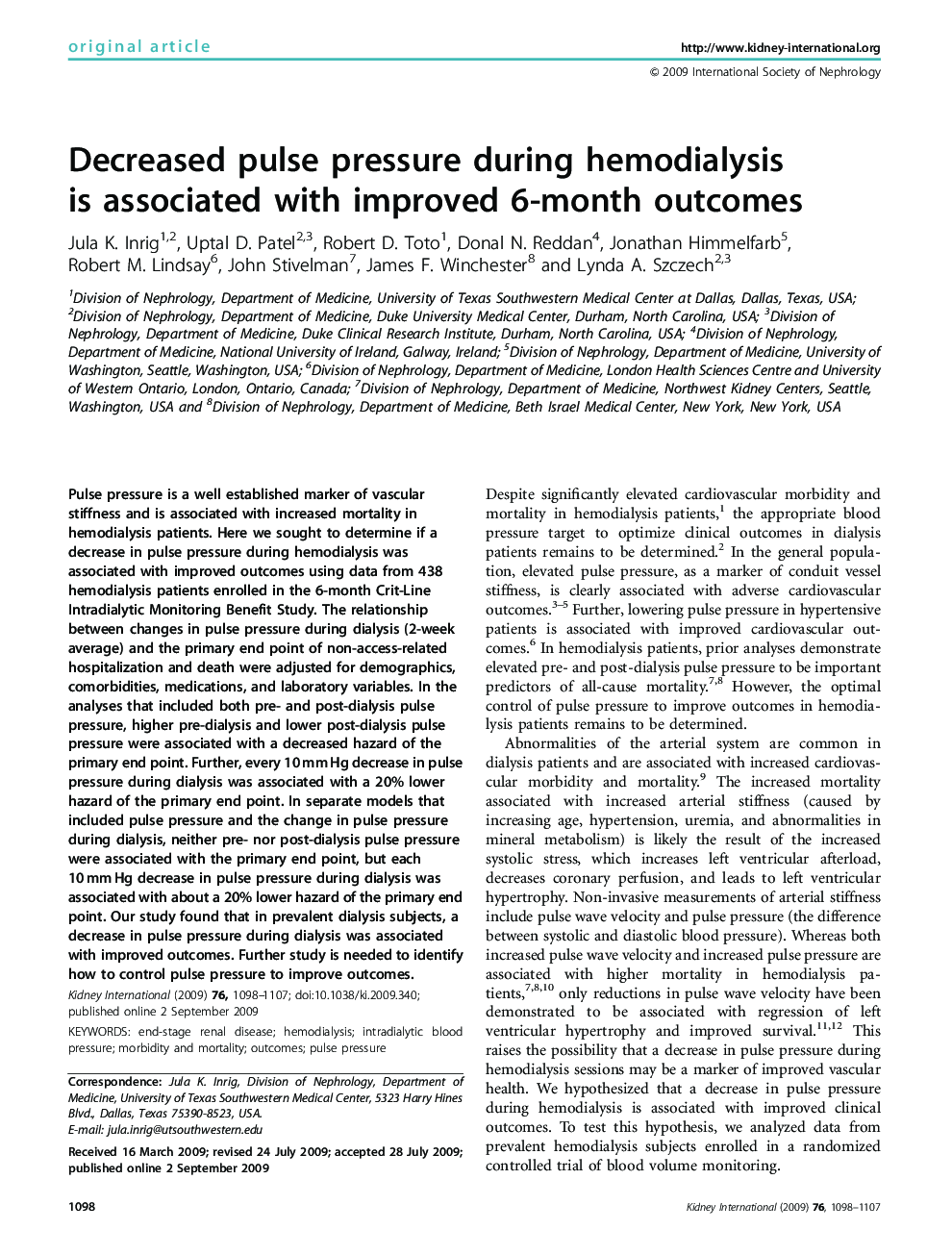| Article ID | Journal | Published Year | Pages | File Type |
|---|---|---|---|---|
| 3885607 | Kidney International | 2009 | 10 Pages |
Pulse pressure is a well established marker of vascular stiffness and is associated with increased mortality in hemodialysis patients. Here we sought to determine if a decrease in pulse pressure during hemodialysis was associated with improved outcomes using data from 438 hemodialysis patients enrolled in the 6-month Crit-Line Intradialytic Monitoring Benefit Study. The relationship between changes in pulse pressure during dialysis (2-week average) and the primary end point of non-access-related hospitalization and death were adjusted for demographics, comorbidities, medications, and laboratory variables. In the analyses that included both pre- and post-dialysis pulse pressure, higher pre-dialysis and lower post-dialysis pulse pressure were associated with a decreased hazard of the primary end point. Further, every 10 mm Hg decrease in pulse pressure during dialysis was associated with a 20% lower hazard of the primary end point. In separate models that included pulse pressure and the change in pulse pressure during dialysis, neither pre- nor post-dialysis pulse pressure were associated with the primary end point, but each 10 mm Hg decrease in pulse pressure during dialysis was associated with about a 20% lower hazard of the primary end point. Our study found that in prevalent dialysis subjects, a decrease in pulse pressure during dialysis was associated with improved outcomes. Further study is needed to identify how to control pulse pressure to improve outcomes.
